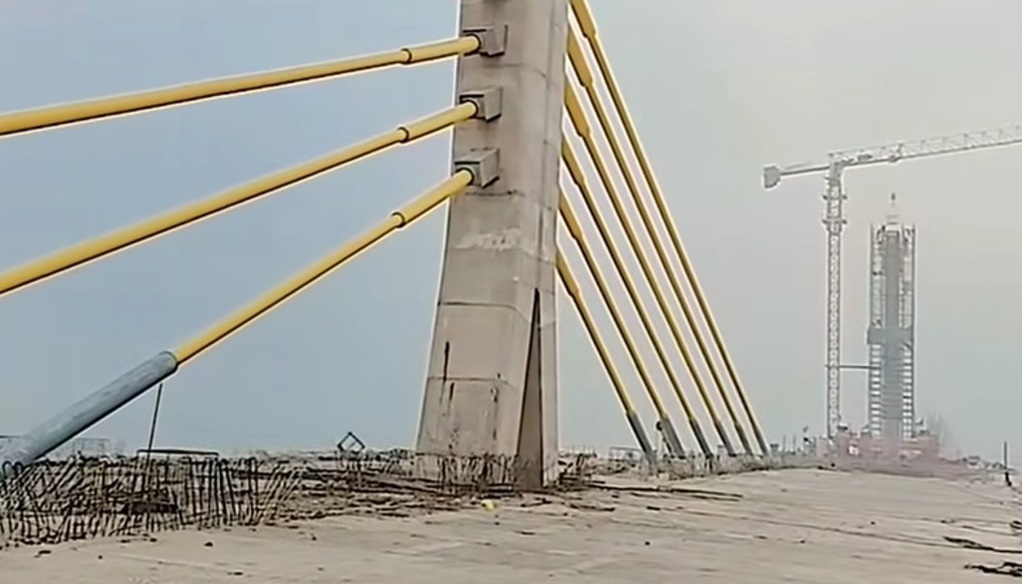Bihar’s First and Asia’s Widest 6-Lane Cable Bridge Nears Completion; Traffic to Start by April 2025

Begusarai: Bihar is set to witness a significant milestone with the upcoming completion of Asia’s widest six-lane cable-stayed bridge over the Ganges River. The bridge, which will connect Aunta in Mokama and Simaria in Begusarai, is expected to open for public use by April 2025. Over 92% of the construction has been completed, with finishing touches currently underway. The project is expected to be fully ready and operational by March 2025.
This ambitious project, costing ₹1161 crore, spans 1.865 km, with an additional 6.285 km of approach roads, bringing the total length to 8.15 km. The foundation stone for this bridge was laid by Prime Minister Narendra Modi in 2017, and construction began on August 11, 2018, undertaken by SP Singla Construction Private Limited under Welspun Enterprises.
In addition to the six-lane bridge, several other infrastructure projects on both sides of the Ganga are nearing completion. These include a rail over bridge (ROB), two rail under bridges (RUB), and six vehicle under bridges (VUB). The ROB near Hathidah Junction is being built swiftly, where National Highway 31 will pass over NH-80.
The entire load of this six-lane bridge will be supported solely by its cables, making it a standout example of modern engineering. The bridge’s width of 34 meters, including three 13-meter lanes on each side and 1.5-meter-wide footpaths, will ensure easy movement for vehicles, pedestrians, and cyclists. It will also feature lighting for safe travel during evening and nighttime.
The bridge’s construction has faced delays twice. Initially scheduled for completion within 42 months, the project faced setbacks due to multiple reasons, including the COVID-19 pandemic and rising water levels in the Ganges. The original deadlines of March 2022 and December 2023 were missed, but the project is now on track to meet its revised timeline.
Once completed, the bridge will significantly reduce travel time and distance between regions of North, South, and West Bihar, including areas like Darbhanga, Samastipur, Saharsa, Patna, and Buxar. The new bridge is expected to improve connectivity and support economic growth in the region by easing transportation between key districts.
Historically, Simaria has been a strategic location for connecting Northeast India to the rest of the country. The first bridge over the Ganges, Rajendra Setu, was built in Simaria after independence with the efforts of Dr. Shri Krishna Singh. However, it was only a two-lane bridge, and the new six-lane structure will serve as a significant upgrade in capacity and efficiency.
The six-lane bridge is anticipated to become a crucial lifeline for the region, boosting both connectivity and development across Bihar.





